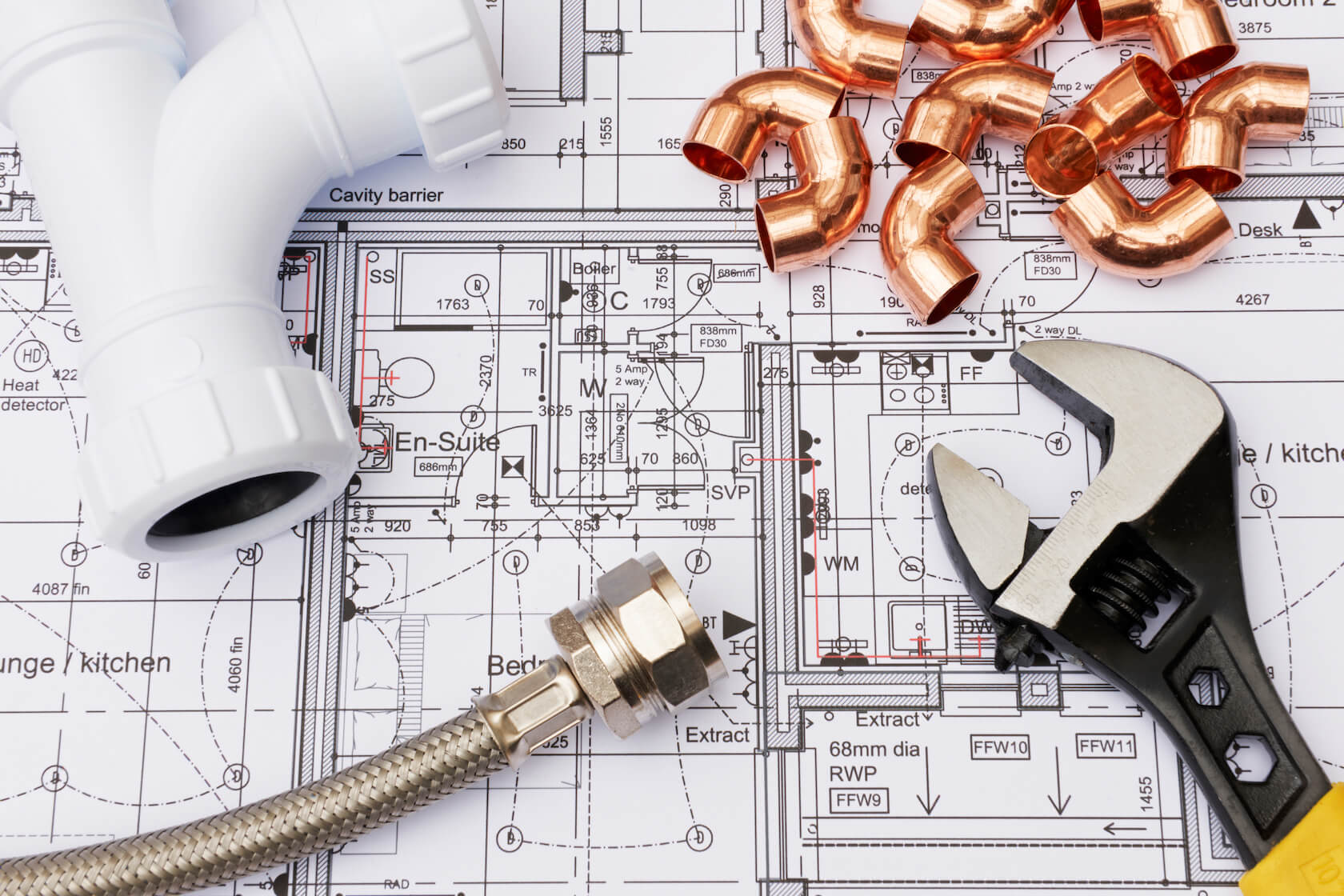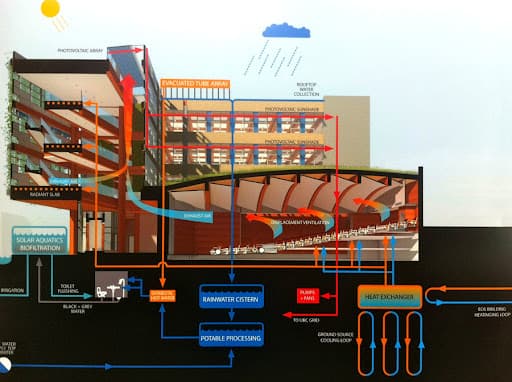Breaking Down The Layout of Your Property's Plumbing System
Breaking Down The Layout of Your Property's Plumbing System
Blog Article
We have found the article on Anatomy of a House: Understanding the Components below on the net and reckoned it made perfect sense to relate it with you on this site.

Recognizing how your home's pipes system works is important for every home owner. From delivering tidy water for drinking, food preparation, and bathing to securely removing wastewater, a properly maintained plumbing system is important for your family's health and convenience. In this extensive overview, we'll explore the detailed network that comprises your home's pipes and offer pointers on maintenance, upgrades, and taking care of common concerns.
Introduction
Your home's pipes system is greater than just a network of pipelines; it's a complex system that guarantees you have accessibility to clean water and reliable wastewater removal. Understanding its parts and how they collaborate can aid you protect against expensive repairs and make sure everything runs efficiently.
Fundamental Elements of a Plumbing System
Pipelines and Tubing
At the heart of your pipes system are the pipes and tubes that bring water throughout your home. These can be constructed from different products such as copper, PVC, or PEX, each with its advantages in regards to sturdiness and cost-effectiveness.
Components: Sinks, Toilets, Showers, etc.
Components like sinks, toilets, showers, and tubs are where water is used in your home. Recognizing exactly how these components attach to the plumbing system helps in identifying troubles and planning upgrades.
Valves and Shut-off Points
Shutoffs regulate the flow of water in your plumbing system. Shut-off valves are vital throughout emergencies or when you need to make repair work, enabling you to separate parts of the system without interrupting water circulation to the entire home.
Water Supply System
Key Water Line
The primary water line attaches your home to the community water system or a personal well. It's where water enters your home and is dispersed to numerous components.
Water Meter and Pressure Regulator
The water meter steps your water usage, while a pressure regulatory authority makes sure that water moves at a secure stress throughout your home's plumbing system, preventing damage to pipes and fixtures.
Cold Water vs. Hot Water Lines
Comprehending the distinction between cold water lines, which supply water directly from the primary, and hot water lines, which bring heated water from the water heater, assists in troubleshooting and planning for upgrades.
Drain System
Drain Water Lines and Traps
Drain pipelines lug wastewater away from sinks, showers, and bathrooms to the drain or sewage-disposal tank. Catches protect against sewer gases from entering your home and also trap debris that might create obstructions.
Air flow Pipelines
Air flow pipes allow air into the drainage system, preventing suction that can reduce water drainage and trigger catches to vacant. Proper ventilation is important for maintaining the stability of your pipes system.
Relevance of Correct Water Drainage
Ensuring proper drain stops back-ups and water damages. On a regular basis cleansing drains pipes and preserving catches can stop expensive repair services and prolong the life of your plumbing system.
Water Heating Unit
Kinds Of Water Heaters
Water heaters can be tankless or traditional tank-style. Tankless heaters warmth water as needed, while storage tanks keep heated water for immediate use.
Updating Your Pipes System
Factors for Upgrading
Upgrading to water-efficient fixtures or replacing old pipelines can boost water high quality, minimize water expenses, and increase the value of your home.
Modern Pipes Technologies and Their Advantages
Check out innovations like smart leakage detectors, water-saving commodes, and energy-efficient hot water heater that can save money and lower ecological impact.
Expense Considerations and ROI
Compute the ahead of time expenses versus long-term cost savings when considering pipes upgrades. Lots of upgrades pay for themselves through lowered energy bills and less repairs.
How Water Heaters Link to the Plumbing System
Recognizing how water heaters connect to both the cold water supply and warm water distribution lines helps in diagnosing concerns like insufficient warm water or leaks.
Upkeep Tips for Water Heaters
On a regular basis flushing your hot water heater to eliminate sediment, checking the temperature level settings, and evaluating for leakages can extend its life-span and improve power performance.
Usual Pipes Problems
Leaks and Their Reasons
Leaks can take place due to maturing pipes, loosened installations, or high water pressure. Attending to leaks quickly protects against water damage and mold and mildew development.
Clogs and Obstructions
Clogs in drains and bathrooms are usually caused by flushing non-flushable things or a buildup of grease and hair. Utilizing drainpipe screens and being mindful of what decreases your drains pipes can prevent blockages.
Signs of Plumbing Issues to Expect
Low water pressure, sluggish drains pipes, foul odors, or abnormally high water bills are signs of prospective pipes troubles that need to be addressed without delay.
Plumbing Maintenance Tips
Routine Assessments and Checks
Set up yearly plumbing examinations to catch issues early. Search for indications of leakages, deterioration, or mineral build-up in faucets and showerheads.
DIY Upkeep Tasks
Simple tasks like cleaning tap aerators, looking for toilet leakages making use of dye tablets, or protecting subjected pipelines in cool environments can protect against significant pipes concerns.
When to Call a Professional Plumber
Know when a plumbing issue requires professional competence. Attempting complicated repair work without appropriate understanding can result in more damage and higher repair costs.
Tips for Reducing Water Usage
Simple habits like fixing leakages without delay, taking much shorter showers, and running complete tons of laundry and meals can conserve water and lower your utility costs.
Eco-Friendly Pipes Options
Consider sustainable plumbing materials like bamboo for flooring, which is durable and environment-friendly, or recycled glass for counter tops.
Emergency Preparedness
Steps to Take Throughout a Plumbing Emergency situation
Know where your shut-off valves lie and exactly how to switch off the water system in case of a ruptured pipe or significant leakage.
Value of Having Emergency Calls Helpful
Keep contact details for neighborhood plumbers or emergency solutions easily available for fast action during a plumbing situation.
Ecological Influence and Preservation
Water-Saving Fixtures and Appliances
Mounting low-flow faucets, showerheads, and toilets can dramatically minimize water usage without sacrificing efficiency.
Do It Yourself Emergency Situation Fixes (When Appropriate).
Short-lived fixes like making use of duct tape to patch a dripping pipe or putting a bucket under a trickling faucet can minimize damages until a specialist plumbing technician arrives.
Verdict.
Understanding the composition of your home's plumbing system encourages you to maintain it properly, saving money and time on repair services. By following routine upkeep routines and remaining informed concerning modern pipes technologies, you can guarantee your pipes system operates effectively for years to find.
HOW YOUR PLUMBING SYSTEM WORKS
Which Pipes Do What?
Blue lines = fresh water supply entering the building Red lines = hot water supply entering the building Grey lines = pipes carrying waste away from the building and venting pipes carrying gases away from the building (through the roof) YOUR MAIN PLUMBING SYSTEMS
There are two main plumbing systems that support your home s basic plumbing needs one that brings clean water into your home, and one that sends dirty water away from your home. Connected to the toilet, bath, shower, and other faucets in your home, these two systems keep your water flowing in the right directions.
ACCESSING FRESH WATER
Fresh and clean water is brought into your home through the main water supply line . Filtered through one pipe, this water is pressured to flow into the various fixtures in your home at any given time.
This water can be sourced from a well located on your property, a pond or river (mostly cottages), or, as in most cases, from the city s municipal water treatment centre. However, it is important to note that water that is untreated, such as the water siphoned from ponds or rivers, may not be safe to drink. Personal water supplies always need to be treated for hardness and contaminants before consumed.
MUNICIPAL WATER SUPPLIES
Improve taste and odour Remove sediment Eliminate hardness Reduce chlorine COLD WATER SUPPLY VS. HOT WATER SUPPLY
Cold water flows into your home or building through the service line, which then distributes hot or cold water to your fixtures. This line is most commonly run through a central column that runs floor to floor. Hot water runs in short and straight pipes as the longer the pipeline, the more heat that will be lost in the transfer. Having shorter pipes also allows residents to access hot water more quickly.
WASTE WATER SYSTEM
Your wastewater system is divided into two parts pipes that send wastewater away from your home and venting pipes that send sewer gas away from your home. Sewage water travels through pipes that flush the water and waste towards local sewers that are operated and managed by your city or town. Most sewer systems rely on gravity to move the wastewater to where it needs to go.
The further away from your toilet or sink, the larger wastewater pipes become. This allows for waste to be disposed of from various parts of your home or business at once without pipe blockages. The angle and flow of these pipes are also essential for keeping your waste pipes clear of build up.
https://harrisplumbing.ca/how-your-home-plumbing-system-works/

We were shown that write-up on from someone on a different web property. Don't hesitate to set aside a second to promote this page if you enjoyed it. We love reading our article about Exploring Your Homes Plumbing Anatomy.
About Report this page